Fort Stewart, Georgia on:
[Wikipedia]
[Google]
[Amazon]
Fort Stewart is a
 3rd Infantry Division
*
3rd Infantry Division
*  Division Headquarters and Headquarters Battalion
** 1st
Division Headquarters and Headquarters Battalion
** 1st  5th Squadron,
5th Squadron,  2nd Battalion, 7th Infantry Regiment "Cottonbalers"
***
2nd Battalion, 7th Infantry Regiment "Cottonbalers"
***  1st Battalion,
1st Battalion, 
 1st Battalion,
1st Battalion,  10th Brigade Engineer Battalion (10th BEB) "Bridge the Sky"
***
10th Brigade Engineer Battalion (10th BEB) "Bridge the Sky"
***  3rd Brigade Support Battalion (3rd BSB) "Ready to Roll"
** 2nd Armored Brigade Combat Team (2nd ABCT) "Spartans" as of March 2023, 2nd ABCT is the 'most modern' ABCTCapt. Sean Minto
3rd Brigade Support Battalion (3rd BSB) "Ready to Roll"
** 2nd Armored Brigade Combat Team (2nd ABCT) "Spartans" as of March 2023, 2nd ABCT is the 'most modern' ABCTCapt. Sean Minto
(2 September 2022) US Army’s most modern brigade hosts the GREAT Engagement
2 months to assess readiness, 6 months to remediate *** Headquarters and Headquarters Company (HHC), 2nd ABCT ***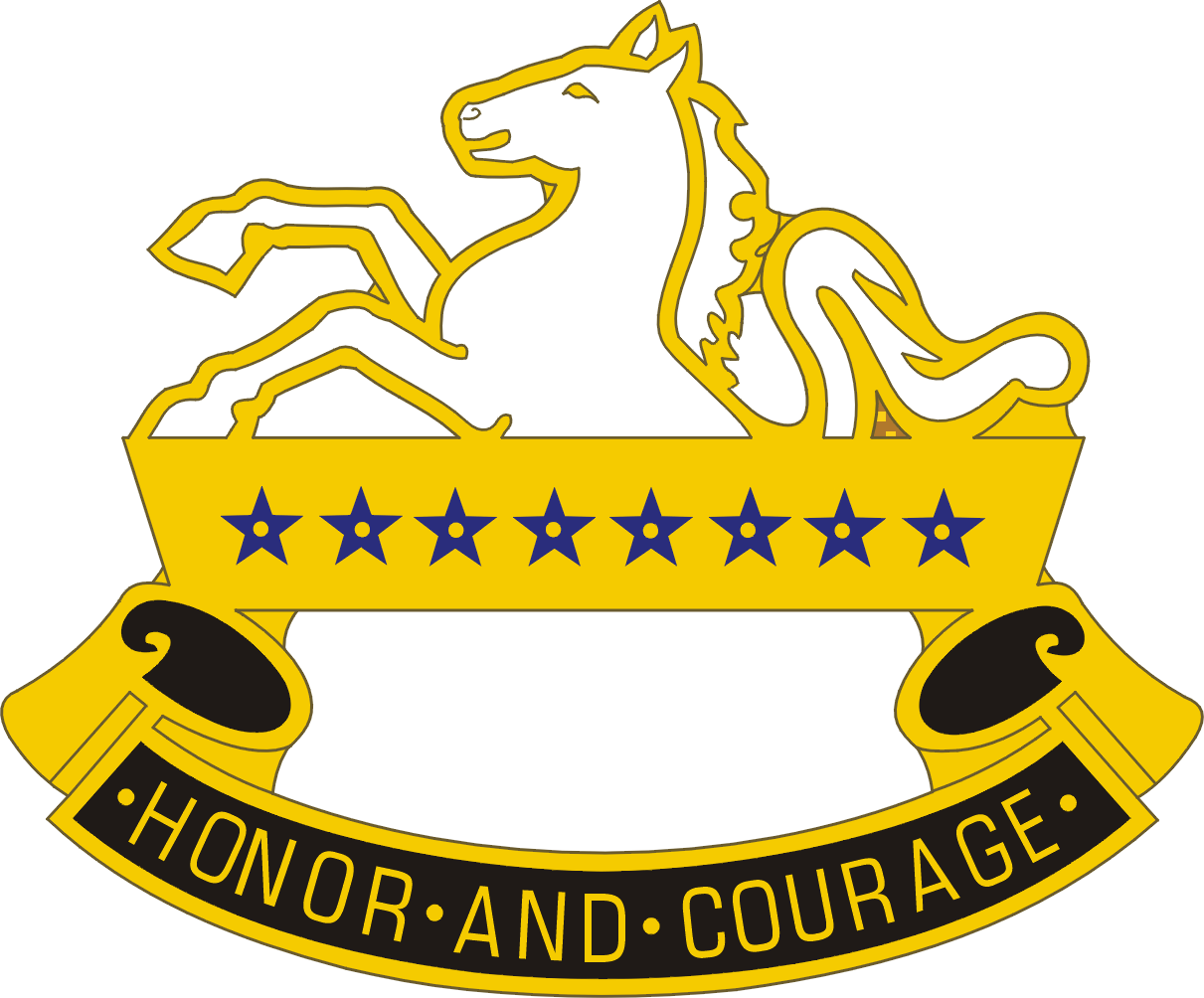 6th Squadron,
6th Squadron,  3rd Battalion, 15th Infantry Regiment "Old China Hands"
***
3rd Battalion, 15th Infantry Regiment "Old China Hands"
***  3rd Battalion, 67th Armor Regiment ”Hounds of Hell"
***
3rd Battalion, 67th Armor Regiment ”Hounds of Hell"
***  2nd Battalion,
2nd Battalion,  1st Battalion,
1st Battalion, 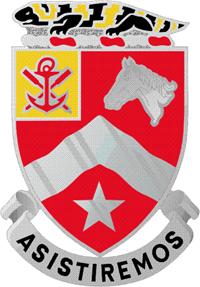 9th Brigade Engineer Battalion (9th BEB) "Gila"
***
9th Brigade Engineer Battalion (9th BEB) "Gila"
***  703rd Brigade Support Battalion (703rd BSB) "Maintain"
** 3rd Division Artillery (DIVARTY) "Marne Thunder" has training and readiness oversight of field artillery battalions, which remain organic to their brigade combat teams.
***
703rd Brigade Support Battalion (703rd BSB) "Maintain"
** 3rd Division Artillery (DIVARTY) "Marne Thunder" has training and readiness oversight of field artillery battalions, which remain organic to their brigade combat teams.
*** 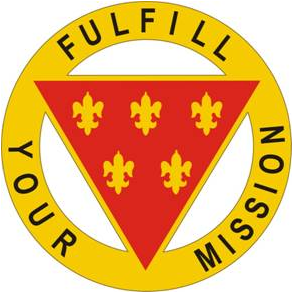 Headquarters and Headquarters Battery, DIVARTY
***
Headquarters and Headquarters Battery, DIVARTY
*** 
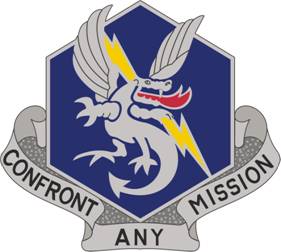 83rd Chemical Battalion (assigned to the division as part of the Army 2030 reform)
***
83rd Chemical Battalion (assigned to the division as part of the Army 2030 reform)
***  92nd Engineer Battalion (assigned to the division as part of the Army 2030 reform)
***
92nd Engineer Battalion (assigned to the division as part of the Army 2030 reform)
*** 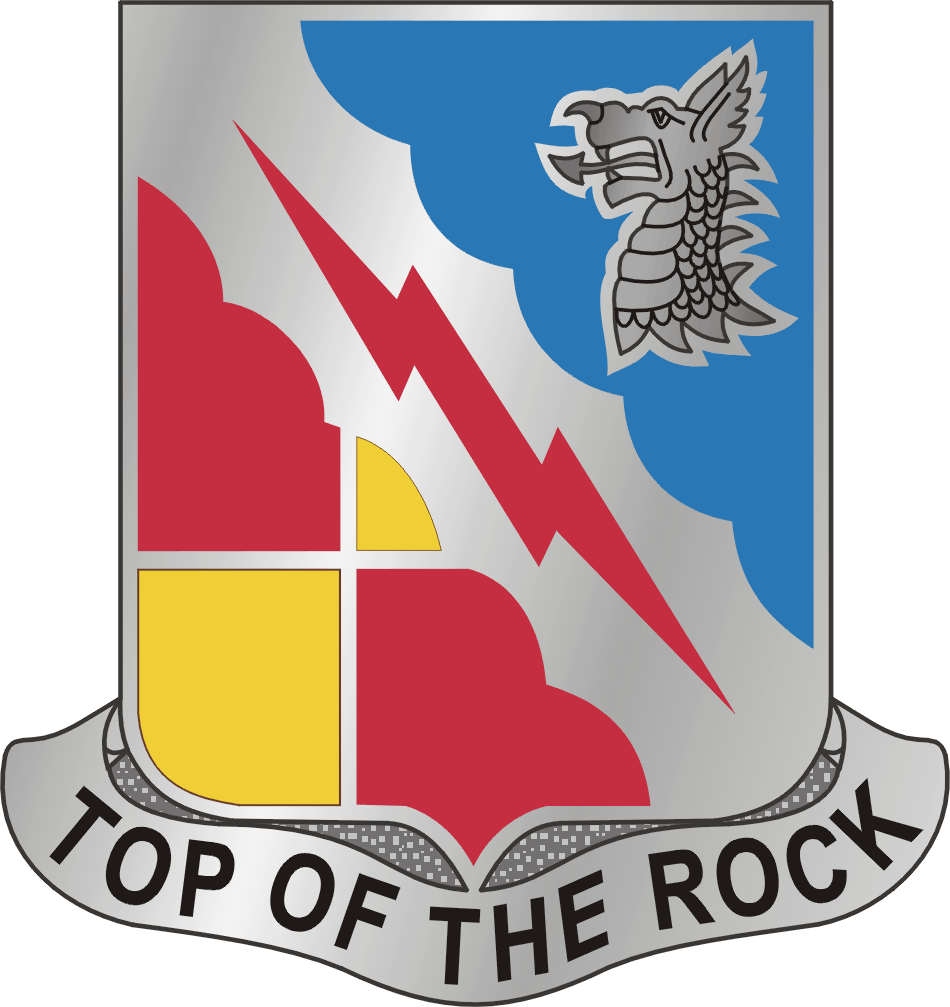
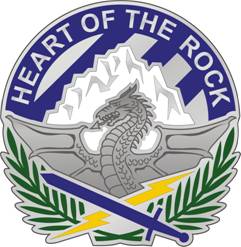 Headquarters and Headquarters Company (HHC), 3rd Division Sustainment Brigade
***
Headquarters and Headquarters Company (HHC), 3rd Division Sustainment Brigade
***  Division Sustainment Troops Battalion
***
Division Sustainment Troops Battalion
***  87th Division Sustainment Support Battalion
87th Division Sustainment Support Battalion
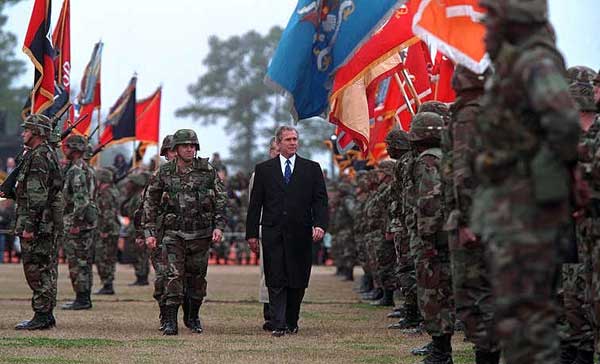 On 1 July 1974, the soon-to-be reactivated 1st Battalion, 75th Infantry Regiment (Ranger), parachuted into Fort Stewart. The battalion was formally reactivated the following month. It was the first Army Ranger battalion activated since the Second World War. Hunter Army Airfield was reopened to support the training and activities of the Rangers.
In October 1974, Headquarters, 24th Infantry Division was activated at Fort Stewart. This historic unit, which had seen active and arduous service in the Pacific during WW II and in the Korean War, and served as an element of NATO forces defending Western Europe, had been inactive since 1970. The "Victory" Division, as it was known, was going to make Fort Stewart its home. Perhaps fittingly, the V-shaped layout of the main post itself represented the "V" for the Victory Division. The 24th Infantry Division would make Fort Stewart uniquely its own.
With the reactivation of the 24th Infantry Division, the post entered a new phase in its history. Facilities were upgraded, and new permanent structures replaced many of the old World War II-era wooden buildings from the days of Camp Stewart. On 1 October 1980, the 24th Infantry Division was designated a mechanized infantry division, and assigned as the heavy division of the XVIII Airborne Corps, the core element of the newly organized Rapid Deployment Force. This designation was the fruition of that potential first realized by those who served at the post during the Cuban Missile Crisis.
The 24th Infantry Division began intensive training over the expanse of piney woods and lowlands of the post, and conducted live-fire exercises on many of the old Camp Stewart antiaircraft ranges. Additional deployment training and exercises took division units from Georgia's woodlands to the National Training Center at Fort Irwin, California, as well as to other areas of the world, such as Egypt and Turkey. The division was regularly seen in REFORGER exercises in Germany and BRIGHT STAR in Egypt. Its training was continuous. The mission of the Rapid Deployment Force was to be prepared to deploy to practically any point on the globe at a moment's notice, to deal with whatever threat might be discerned.
In August 1990, Iraq invaded and overran neighboring Kuwait, and threatened to do the same to Saudi Arabia. The Port of Savannah worked around the clock to load and ship the division's heavy equipment, while aircraft shuttles from Hunter Field flew the division's personnel to Saudi Arabia. Within a month, the entire division had been reassembled in Saudi Arabia to face the possible invasion of that country by Iraqi forces. Fort Stewart had a growing influx of National Guard and Reserve units, who were being mobilized to support the operations in Saudi Arabia and to assume the tasks at the post, which had formerly been accomplished by 24th Infantry Division personnel. In many ways, Fort Stewart appeared to be almost a ghost town, as never before had the entire division been deployed from the post at one time. Within eight months, the crisis at the Persian Gulf had concluded, and the 24th Infantry Division triumphantly returned to its home in coastal Georgia.
The post-Cold War drawdown of forces in Europe resulted in many storied units coming home to the US. On 25 April 1996, "ownership" of Fort Stewart passed, as the 24th Infantry Division was inactivated and the 3rd Infantry Division was reactivated, thus began a new chapter in the history of Fort Stewart. Fort Stewart also was a leading mobilization station for Army units preparing for tours in
On 1 July 1974, the soon-to-be reactivated 1st Battalion, 75th Infantry Regiment (Ranger), parachuted into Fort Stewart. The battalion was formally reactivated the following month. It was the first Army Ranger battalion activated since the Second World War. Hunter Army Airfield was reopened to support the training and activities of the Rangers.
In October 1974, Headquarters, 24th Infantry Division was activated at Fort Stewart. This historic unit, which had seen active and arduous service in the Pacific during WW II and in the Korean War, and served as an element of NATO forces defending Western Europe, had been inactive since 1970. The "Victory" Division, as it was known, was going to make Fort Stewart its home. Perhaps fittingly, the V-shaped layout of the main post itself represented the "V" for the Victory Division. The 24th Infantry Division would make Fort Stewart uniquely its own.
With the reactivation of the 24th Infantry Division, the post entered a new phase in its history. Facilities were upgraded, and new permanent structures replaced many of the old World War II-era wooden buildings from the days of Camp Stewart. On 1 October 1980, the 24th Infantry Division was designated a mechanized infantry division, and assigned as the heavy division of the XVIII Airborne Corps, the core element of the newly organized Rapid Deployment Force. This designation was the fruition of that potential first realized by those who served at the post during the Cuban Missile Crisis.
The 24th Infantry Division began intensive training over the expanse of piney woods and lowlands of the post, and conducted live-fire exercises on many of the old Camp Stewart antiaircraft ranges. Additional deployment training and exercises took division units from Georgia's woodlands to the National Training Center at Fort Irwin, California, as well as to other areas of the world, such as Egypt and Turkey. The division was regularly seen in REFORGER exercises in Germany and BRIGHT STAR in Egypt. Its training was continuous. The mission of the Rapid Deployment Force was to be prepared to deploy to practically any point on the globe at a moment's notice, to deal with whatever threat might be discerned.
In August 1990, Iraq invaded and overran neighboring Kuwait, and threatened to do the same to Saudi Arabia. The Port of Savannah worked around the clock to load and ship the division's heavy equipment, while aircraft shuttles from Hunter Field flew the division's personnel to Saudi Arabia. Within a month, the entire division had been reassembled in Saudi Arabia to face the possible invasion of that country by Iraqi forces. Fort Stewart had a growing influx of National Guard and Reserve units, who were being mobilized to support the operations in Saudi Arabia and to assume the tasks at the post, which had formerly been accomplished by 24th Infantry Division personnel. In many ways, Fort Stewart appeared to be almost a ghost town, as never before had the entire division been deployed from the post at one time. Within eight months, the crisis at the Persian Gulf had concluded, and the 24th Infantry Division triumphantly returned to its home in coastal Georgia.
The post-Cold War drawdown of forces in Europe resulted in many storied units coming home to the US. On 25 April 1996, "ownership" of Fort Stewart passed, as the 24th Infantry Division was inactivated and the 3rd Infantry Division was reactivated, thus began a new chapter in the history of Fort Stewart. Fort Stewart also was a leading mobilization station for Army units preparing for tours in
 Fort Stewart's school district is the
Fort Stewart's school district is the
Fort Stewart Website
{{authority control Stewart Buildings and structures in Evans County, Georgia Buildings and structures in Long County, Georgia Buildings and structures in Tattnall County, Georgia Hinesville metropolitan area Stewart Buildings and structures in Bryan County, Georgia Buildings and structures in Liberty County, Georgia
United States Army
The United States Army (USA) is the primary Land warfare, land service branch of the United States Department of Defense. It is designated as the Army of the United States in the United States Constitution.Article II, section 2, clause 1 of th ...
post in the U.S. state
In the United States, a state is a constituent political entity, of which there are 50. Bound together in a political union, each state holds governmental jurisdiction over a separate and defined geographic territory where it shares its so ...
of Georgia
Georgia most commonly refers to:
* Georgia (country), a country in the South Caucasus
* Georgia (U.S. state), a state in the southeastern United States
Georgia may also refer to:
People and fictional characters
* Georgia (name), a list of pe ...
. It lies primarily in Liberty
Liberty is the state of being free within society from oppressive restrictions imposed by authority on one's way of life, behavior, or political views. The concept of liberty can vary depending on perspective and context. In the Constitutional ...
and Bryan counties, but also extends into smaller portions of Evans
Evans or Evan's may refer to:
People
* Evans (surname)
* List of people with surname Evans
* Evans Welch, Trinidad and Tobago politician
Places United States
* Evans Island, an island of Alaska
* Evans, Colorado
* Evans, Georgia
* Evans County ...
, Long
Long may refer to:
Measurement
* Long, characteristic of something of great duration
* Long, characteristic of something of great length
* Longitude (abbreviation: long.), a geographic coordinate
* Longa (music), note value in early music mens ...
, and Tattnall Counties. The nearby city of Hinesville, along with Ft. Stewart and the rest of Liberty and Long Counties, comprise the Hinesville metropolitan area
The Hinesville metropolitan area, officially the Hinesville metropolitan statistical area and previously the Hinesville–Ft. Stewart metropolitan statistical area, is defined by the U.S. Office of Management and Budget as a metropolitan statist ...
. Many of Fort Stewart's residents are members of the 3rd Infantry Division.
The Fort Stewart Military Reservation includes about , including land that was formerly the town of Clyde, Georgia
Clyde is an extinct town in Bryan County, in the U.S. state of Georgia
Georgia most commonly refers to:
* Georgia (country), a country in the South Caucasus
* Georgia (U.S. state), a state in the southeastern United States
Georgia may also ...
.
Geography
Fort Stewart is located along theCanoochee River
The Canoochee River (pronounced ''kuh-NOO-chee'') is a U.S. Geological Survey. National Hydrography Dataset high-resolution flowline dataThe National Map, accessed April 26, 2011 river in southeastern Georgia in the United States. It is a tribu ...
.
Units
Units assigned to Fort Stewart are: 3rd Infantry Division
*
3rd Infantry Division
* Armored Brigade Combat Team
The brigade combat team (BCT) is the basic deployable unit of maneuver in the U.S. Army. A brigade combat team consists of one combat arms branch maneuver brigade, and its assigned support and fire units. A brigade is normally commanded by ...
(1st ABCT), 3rd Infantry Division "Raider" – regionally allocated to Europe
*** Headquarters and Headquarters Company (HHC), 1st ABCT
***  5th Squadron,
5th Squadron, 7th Cavalry Regiment
The 7th Cavalry Regiment is a United States Army cavalry regiment formed in 1866. Its official nickname is "Garryowen", after the Irish air " Garryowen" that was adopted as its march tune. The regiment participated in some of the largest ba ...
–Reconnaissance, Surveillance, and Target Acquisition
Reconnaissance, surveillance, and target acquisition (RSTA) squadrons are a type of unit in the United States Army. These are cavalry squadrons (though in IBCTs they typically contain at least one dismounted infantry troop), and act at the sq ...
(RSTA) "Warpaint"
***  2nd Battalion, 7th Infantry Regiment "Cottonbalers"
***
2nd Battalion, 7th Infantry Regiment "Cottonbalers"
***  1st Battalion,
1st Battalion, 64th Armor Regiment
The 64th Armor Regiment is an armor regiment of the United States Army, organized under the United States Army Regimental System. It is descended from the 758th Tank Battalion (Light) that served in the Italian campaign during World War II. Red ...
"Desert Rogue"
*** 
3rd Battalion, 69th Armor Regiment
The 3rd Battalion, 69th Armor Regiment (3–69 AR) is a United States Army combined arms battalion and part of the 3rd Infantry Division based at Fort Stewart, Georgia. 3–69 AR was the first conventional US unit to enter Iraq in 2003, and amo ...
"Speed & Power"
*** 41st Field Artillery Regiment
The 41st Field Artillery Regiment is a field artillery regiment of the United States Army (USA).
History
Prior to World War II
The 1st Battalion, 41st Field Artillery was constituted 26 August 1918 in the Regular Army as the 41st Artillery (C ...
(1-41st FAR) "Glory's Guns"
***  10th Brigade Engineer Battalion (10th BEB) "Bridge the Sky"
***
10th Brigade Engineer Battalion (10th BEB) "Bridge the Sky"
***  3rd Brigade Support Battalion (3rd BSB) "Ready to Roll"
** 2nd Armored Brigade Combat Team (2nd ABCT) "Spartans" as of March 2023, 2nd ABCT is the 'most modern' ABCTCapt. Sean Minto
3rd Brigade Support Battalion (3rd BSB) "Ready to Roll"
** 2nd Armored Brigade Combat Team (2nd ABCT) "Spartans" as of March 2023, 2nd ABCT is the 'most modern' ABCTCapt. Sean Minto(2 September 2022) US Army’s most modern brigade hosts the GREAT Engagement
2 months to assess readiness, 6 months to remediate *** Headquarters and Headquarters Company (HHC), 2nd ABCT ***
 6th Squadron,
6th Squadron, 8th Cavalry Regiment
The 8th Cavalry Regiment is a regiment of the United States Army formed in 1866 during the American Indian Wars. The 8th Cavalry continued to serve under a number of designations, fighting in every other major U.S. conflict since, except Wor ...
"Mustang"
***  3rd Battalion, 15th Infantry Regiment "Old China Hands"
***
3rd Battalion, 15th Infantry Regiment "Old China Hands"
***  3rd Battalion, 67th Armor Regiment ”Hounds of Hell"
***
3rd Battalion, 67th Armor Regiment ”Hounds of Hell"
***  2nd Battalion,
2nd Battalion, 69th Armor Regiment
The 69th Armor is an armored (tank) regiment of the United States Army. The 69th Armor Regiment is part of the U.S. Army Regimental System with only two battalions, the 2nd and 3rd Battalion, 69th Armor Regiment, existing in separate brigades and ...
"Panthers"
*** 9th Field Artillery Regiment
The 9th Field Artillery Regiment is a field artillery regiment of the United States Army first formed in 1916. The regiment served in Hawaii during World War I, 3rd, 4th, 7th, and 9th Divisions between the world wars, and with 3rd Infantry Divis ...
(1-9th FAR)"Battlekings"
***  9th Brigade Engineer Battalion (9th BEB) "Gila"
***
9th Brigade Engineer Battalion (9th BEB) "Gila"
***  703rd Brigade Support Battalion (703rd BSB) "Maintain"
** 3rd Division Artillery (DIVARTY) "Marne Thunder" has training and readiness oversight of field artillery battalions, which remain organic to their brigade combat teams.
***
703rd Brigade Support Battalion (703rd BSB) "Maintain"
** 3rd Division Artillery (DIVARTY) "Marne Thunder" has training and readiness oversight of field artillery battalions, which remain organic to their brigade combat teams.
***  Headquarters and Headquarters Battery, DIVARTY
***
Headquarters and Headquarters Battery, DIVARTY
*** 
63rd Expeditionary Signal Battalion
The 63d Expeditionary Signal Battalion (Enhanced) is headquartered and located on Fort Stewart, Georgia and is a subordinate unit of the 35th Corps Signal Brigade. The 63d ESB was constituted in July 1940. It was redesignated as an ESB-E on June ...
(located at Fort Stewart, but part to 35th Signal Brigade
***  83rd Chemical Battalion (assigned to the division as part of the Army 2030 reform)
***
83rd Chemical Battalion (assigned to the division as part of the Army 2030 reform)
***  92nd Engineer Battalion (assigned to the division as part of the Army 2030 reform)
***
92nd Engineer Battalion (assigned to the division as part of the Army 2030 reform)
*** 
103rd Intelligence and Electronic Warfare Battalion
The 103rd Intelligence and Electronic Warfare Battalion (103rd IEW Battalion) is a United States Army military intelligence and electronic warfare battalion which serves as a direct subordinate unit to the 3rd Infantry Division. It was reactivat ...
(reactivated 16 September 2022 as part of the Army 2030 reform)
** 3rd Division Sustainment Brigade
***  Headquarters and Headquarters Company (HHC), 3rd Division Sustainment Brigade
***
Headquarters and Headquarters Company (HHC), 3rd Division Sustainment Brigade
***  Division Sustainment Troops Battalion
***
Division Sustainment Troops Battalion
***  87th Division Sustainment Support Battalion
87th Division Sustainment Support Battalion
History
Fort Stewart is named for Brigadier General Daniel Stewart, a hero of the Revolutionary War and a political leader fromLiberty County, Georgia
Liberty County is a County (United States), county in the U.S. state of Georgia (U.S. state), Georgia. As of the 2020 United States census, 2020 census, the population is 65,256. The county seat is Hinesville, Georgia, Hinesville.
Liberty Coun ...
. It is the largest Army installation east of the Mississippi River, covering , which include parts of Liberty, Long, Bryan, Evans, and Tattnall Counties. The reservation is about across from east to west, and from north to south. During World War II, the camp had billeting space for 2,705 officers, and 37,267 enlisted men. It is close to the East Coast, and two deepwater ports: Savannah, Georgia
Savannah ( ) is the oldest city in the U.S. state of Georgia (U.S. state), Georgia and the county seat of Chatham County, Georgia, Chatham County. Established in 1733 on the Savannah River, the city of Savannah became the Kingdom of Great Brita ...
(42 mi) and Charleston, South Carolina
Charleston is the List of municipalities in South Carolina, most populous city in the U.S. state of South Carolina. The city lies just south of the geographical midpoint of South Carolina's coastline on Charleston Harbor, an inlet of the Atla ...
(142 mi). Tank, field artillery, helicopter gunnery, and small-arms ranges operate simultaneously throughout the year with little time lost to bad weather.
Anti-Aircraft Artillery Center
In June 1940, Congress authorized funding for the purchase of property in coastal Georgia for the purpose of building an antiaircraft artillery training center. It was to be located just outside Hinesville, Georgia, some southwest of Savannah. On 1 July 1940, the first 5,000 acres (20 km) were bought and subsequent purchases followed. Eventually the reservation would include over 280,000 acres (1100 km) and stretch over five counties. The large expanse of property was required for the firing ranges and impact areas which an antiaircraft artillery training center would need for live-fire training. In November 1940, the Anti-Aircraft Artillery Training Center was officially designated as Camp Stewart, in honor of General Daniel Stewart, a native of Liberty County, who had fought withFrancis Marion
Brigadier general (United States), Brigadier General Francis Marion ( 1732 – February 27, 1795), also known as the "Swamp Fox", was an American military officer, planter, and politician who served during the French and Indian War and t ...
during the American Revolution, and who became one of the county's military heroes. An announcement of the new post's name was made in January 1941.
During the early months, training was done on wooden mock-ups, since real antiaircraft guns were in short supply. Live-firing exercises were conducted on the beaches of St. Augustine and Amelia Island, Florida, since the necessary ranges and impact areas had not been completed at Camp Stewart. This live-fire training over the ocean continued until September 1941, while at Camp Stewart practice firing and searchlight training progressed. In fall of 1941, the Carolina Maneuvers
The Carolina Maneuvers were a series of United States Army exercises held around the border of North Carolina and South Carolina in 1941. The exercises, which involved some 350,000 troops, were designed to evaluate United States training, logisti ...
were held, and all the antiaircraft units from Camp Stewart participated.
Savannah's First Bryan Baptist Church had a special service for soldiers from the Savannah Air Base and Camp Stewart 21 December 1941. Reverend Terrill wrote a letter to Asa H. Gordon, director of the Colored SSSS, extending the invitation to the soldiers. Church members took at least one soldier home from the service for Sunday dinner. Reverend Terrill, at the special service for soldiers, preached on "The Negro's Place in National Defense". Thelma Lee Stevens gave the welcome address. Scout Westley W. Law was master of ceremonies. The National Guard units departed, and new units came in for training. Facilities were expanded and improved. Antiaircraft artillery training was upgraded and a detachment of Women Airforce Service Pilots
The Women Airforce Service Pilots (WASP) (also Women's Army Service Pilots or Women's Auxiliary Service Pilots) was a civilian women pilots' organization, whose members were United States federal civil service employees. Members of WASP became t ...
(WASPs) soon arrived at the air facility on post, Liberty Field
Liberty is the state of being freedom, free within society from oppressive restrictions imposed by authority on one's way of life, behavior, or political views. The concept of liberty can vary depending on perspective and context. In the Constit ...
, to fly planes to tow targets for the live-fire exercises. Eventually, radio-controlled airplane targets came into use as a more effective and safer means of live-fire practice.
As the war progressed, Camp Stewart's training programs continued expanding to keep pace with the needs placed upon it. Units were shipped out promptly upon completion of their training, and new units received in their place. The camp provided well-trained soldiers for duty in the European, Mediterranean, North African, and Pacific Theaters.
POW camp
By late 1943, Camp Stewart assumed a new responsibility, as one of many holding areas designated in the United States for German and Italian prisoners of war (POWs), who had fallen into Allied hands during fighting in North Africa. These men were held in two separate POW facilities on post, and they were used as a labor force for base operations, construction projects, and area farming. Beside its initial purposes as an antiaircraft artillery training center, Camp Stewart also served as a cooks' and bakers' school, and as a staging area for a number of Army postal units. By spring 1944, the camp was bulging at its seams, as more than 55,000 soldiers occupied the facility during the build-up for the D-Day invasion. Almost overnight, though, the post was virtually empty, as these units shipped out for England. With the D-Day invasion and Allied control of the air over Europe, the need for antiaircraft units diminished, and in response, the antiaircraft training at Camp Stewart was phased out. By January 1945, only the POW camps were still functioning.After World War II
With the end of the war, Camp Stewart came to life briefly as a separation center for redeployed soldiers, but on 30 September 1945, the post was inactivated. Only two officers, 10 enlisted men, and 50 civilian employees maintained the facilities, and the Georgia National Guard only did training during the summers.Korean War
With the outbreak of hostilities in Korea in June 1950, the U.S. once again found itself with the need to update training and to prepare new soldiers to meet the crisis in Korea. Camp Stewart was reopened on 9 August 1950, its facilities repaired, and National Guard troops brought in for training. On 28 December 1950, Camp Stewart was redesignated as the 3rd Army Anti-Aircraft Artillery Training Center. Intensive training of soldiers destined for service in Korea began. Since control of the air in Korea was not seriously challenged by the Communist forces, in late 1953, Camp Stewart's role changed from solely antiaircraft training to include armor and tank firing. When theKorean War
The Korean War (25 June 1950 – 27 July 1953) was an armed conflict on the Korean Peninsula fought between North Korea (Democratic People's Republic of Korea; DPRK) and South Korea (Republic of Korea; ROK) and their allies. North Korea was s ...
eventually cooled down, the U.S. obviously would be required to maintain a ready and able military force to deal with any potential threat to itself and its allies. Camp Stewart would have a role to play in that mission. The decision was made that the post would no longer be viewed as a temporary installation. On 21 March 1956, it was redesignated as Fort Stewart. Its role would continue to evolve in response to specific needs and world events.
In 1959, Fort Stewart was redesignated as an Armor and Artillery Firing Center, since its old antiaircraft ranges and impact areas were better suited for this purpose in the new age of missiles. By 1961, a feeling arose that Fort Stewart may have served its usefulness, anda movement was afoot to deactivate the post again. However, the age of missiles brought with it new threats and a new mission for Fort Stewart.
Cuban Missile Crisis
As a result of the Cuban Missile Crisis in October 1962, the 1st Armored Division was ordered to Fort Stewart for staging, and in the short span of two weeks, the population of the fort rose from 3,500 to over 30,000 personnel. The country prepared for the worst, but in the end, a compromise was reached, and the crisis passed. Shortly after, word was received at Fort Stewart that a VIP would be visiting the post and that the post conference room was not worthy of a person of this stature. Thus, preparations were rapidly made to convert this conference room into a more suitable one. The command group at Fort Stewart quickly discerned that this VIP would be none other than Commander in Chief, PresidentJohn F. Kennedy
John Fitzgerald Kennedy (May 29, 1917 – November 22, 1963), also known as JFK, was the 35th president of the United States, serving from 1961 until his assassination in 1963. He was the first Roman Catholic and youngest person elected p ...
. He arrived at Hunter Field on 26 Nov. 1962 and flew to Donovan Parade Field at Fort Stewart, where he reviewed the entire 1st Armored Division. From there, he was taken to the new conference room, where he was briefed on armed forces readiness to respond to the Cuban Missile Crisis, and then he visited troops in nearby training areas.
Vietnam War
After the Cuban Missile Crisis had passed, the Cold War situation kept Fort Stewart in an active training role. During the late 1960s, another developing situation brought about yet another change in Fort Stewart's mission. With tensions growing in the divided country of Vietnam, the U.S. found itself becoming increasingly involved in that conflict. The Vietnamese terrain and the type of war being fought there demanded an increased aviation capability through the use of helicopters and light, fixed-wing aircraft. This brought about a need for more aviators. In response to this need, an element of the U.S. Army Aviation School at Fort Rucker, Alabama, was transferred to Fort Stewart in 1966. Helicopter pilot training and helicopter gunnery courses became Fort Stewart's new mission. In an ironic twist, now instead of training soldiers to shoot down aircraft, Fort Stewart was training soldiers to fly them.Hunter Army Airfield
When the U.S. Air Force closed its base at Hunter Field in Savannah in 1967, the Army promptly assumed control and in conjunction with the flight training being conducted at Fort Stewart, the U.S. Army Flight Training Center came into being. The helicopter pilot training was rapidly accelerated and pilots were trained and soon sent to duty all over the world, with a large percentage seeing active duty in Vietnam. The Army established the first dedicated attack helicopter training school at Hunter in July 1967. The Attack Helicopter Training Department (AHTD) trained Army, Marine, and a few foreign officers (principally Spanish Navy) in the AH-1G Cobra attack helicopter. Hunter Army Airfield covers about and is also the home of the U.S. Coast Guard Station, Savannah – the largest helicopter unit in the Coast Guard. It provides Savannah and the Southeast United States with around-the-clock search-and-rescue coverage of its coastal areas. In 1969, President Nixon planned to reduce American involvement in Vietnam by training the Vietnamese military to take over the war. In conjunction with this, helicopter flight training for Vietnamese pilots began at the AHTD in 1970 and continued until 1972. Gradually America's involvement in Vietnam dwindled and by mid-1972 the flight training aspect of Fort Stewart's mission was terminated, and both Hunter Field and Fort Stewart reverted to garrison status. The following year, Hunter Field was closed entirely and Fort Stewart sat idle, with the exception of the National Guard training, which continued to be conducted at the installation.After the Vietnam era
 On 1 July 1974, the soon-to-be reactivated 1st Battalion, 75th Infantry Regiment (Ranger), parachuted into Fort Stewart. The battalion was formally reactivated the following month. It was the first Army Ranger battalion activated since the Second World War. Hunter Army Airfield was reopened to support the training and activities of the Rangers.
In October 1974, Headquarters, 24th Infantry Division was activated at Fort Stewart. This historic unit, which had seen active and arduous service in the Pacific during WW II and in the Korean War, and served as an element of NATO forces defending Western Europe, had been inactive since 1970. The "Victory" Division, as it was known, was going to make Fort Stewart its home. Perhaps fittingly, the V-shaped layout of the main post itself represented the "V" for the Victory Division. The 24th Infantry Division would make Fort Stewart uniquely its own.
With the reactivation of the 24th Infantry Division, the post entered a new phase in its history. Facilities were upgraded, and new permanent structures replaced many of the old World War II-era wooden buildings from the days of Camp Stewart. On 1 October 1980, the 24th Infantry Division was designated a mechanized infantry division, and assigned as the heavy division of the XVIII Airborne Corps, the core element of the newly organized Rapid Deployment Force. This designation was the fruition of that potential first realized by those who served at the post during the Cuban Missile Crisis.
The 24th Infantry Division began intensive training over the expanse of piney woods and lowlands of the post, and conducted live-fire exercises on many of the old Camp Stewart antiaircraft ranges. Additional deployment training and exercises took division units from Georgia's woodlands to the National Training Center at Fort Irwin, California, as well as to other areas of the world, such as Egypt and Turkey. The division was regularly seen in REFORGER exercises in Germany and BRIGHT STAR in Egypt. Its training was continuous. The mission of the Rapid Deployment Force was to be prepared to deploy to practically any point on the globe at a moment's notice, to deal with whatever threat might be discerned.
In August 1990, Iraq invaded and overran neighboring Kuwait, and threatened to do the same to Saudi Arabia. The Port of Savannah worked around the clock to load and ship the division's heavy equipment, while aircraft shuttles from Hunter Field flew the division's personnel to Saudi Arabia. Within a month, the entire division had been reassembled in Saudi Arabia to face the possible invasion of that country by Iraqi forces. Fort Stewart had a growing influx of National Guard and Reserve units, who were being mobilized to support the operations in Saudi Arabia and to assume the tasks at the post, which had formerly been accomplished by 24th Infantry Division personnel. In many ways, Fort Stewart appeared to be almost a ghost town, as never before had the entire division been deployed from the post at one time. Within eight months, the crisis at the Persian Gulf had concluded, and the 24th Infantry Division triumphantly returned to its home in coastal Georgia.
The post-Cold War drawdown of forces in Europe resulted in many storied units coming home to the US. On 25 April 1996, "ownership" of Fort Stewart passed, as the 24th Infantry Division was inactivated and the 3rd Infantry Division was reactivated, thus began a new chapter in the history of Fort Stewart. Fort Stewart also was a leading mobilization station for Army units preparing for tours in
On 1 July 1974, the soon-to-be reactivated 1st Battalion, 75th Infantry Regiment (Ranger), parachuted into Fort Stewart. The battalion was formally reactivated the following month. It was the first Army Ranger battalion activated since the Second World War. Hunter Army Airfield was reopened to support the training and activities of the Rangers.
In October 1974, Headquarters, 24th Infantry Division was activated at Fort Stewart. This historic unit, which had seen active and arduous service in the Pacific during WW II and in the Korean War, and served as an element of NATO forces defending Western Europe, had been inactive since 1970. The "Victory" Division, as it was known, was going to make Fort Stewart its home. Perhaps fittingly, the V-shaped layout of the main post itself represented the "V" for the Victory Division. The 24th Infantry Division would make Fort Stewart uniquely its own.
With the reactivation of the 24th Infantry Division, the post entered a new phase in its history. Facilities were upgraded, and new permanent structures replaced many of the old World War II-era wooden buildings from the days of Camp Stewart. On 1 October 1980, the 24th Infantry Division was designated a mechanized infantry division, and assigned as the heavy division of the XVIII Airborne Corps, the core element of the newly organized Rapid Deployment Force. This designation was the fruition of that potential first realized by those who served at the post during the Cuban Missile Crisis.
The 24th Infantry Division began intensive training over the expanse of piney woods and lowlands of the post, and conducted live-fire exercises on many of the old Camp Stewart antiaircraft ranges. Additional deployment training and exercises took division units from Georgia's woodlands to the National Training Center at Fort Irwin, California, as well as to other areas of the world, such as Egypt and Turkey. The division was regularly seen in REFORGER exercises in Germany and BRIGHT STAR in Egypt. Its training was continuous. The mission of the Rapid Deployment Force was to be prepared to deploy to practically any point on the globe at a moment's notice, to deal with whatever threat might be discerned.
In August 1990, Iraq invaded and overran neighboring Kuwait, and threatened to do the same to Saudi Arabia. The Port of Savannah worked around the clock to load and ship the division's heavy equipment, while aircraft shuttles from Hunter Field flew the division's personnel to Saudi Arabia. Within a month, the entire division had been reassembled in Saudi Arabia to face the possible invasion of that country by Iraqi forces. Fort Stewart had a growing influx of National Guard and Reserve units, who were being mobilized to support the operations in Saudi Arabia and to assume the tasks at the post, which had formerly been accomplished by 24th Infantry Division personnel. In many ways, Fort Stewart appeared to be almost a ghost town, as never before had the entire division been deployed from the post at one time. Within eight months, the crisis at the Persian Gulf had concluded, and the 24th Infantry Division triumphantly returned to its home in coastal Georgia.
The post-Cold War drawdown of forces in Europe resulted in many storied units coming home to the US. On 25 April 1996, "ownership" of Fort Stewart passed, as the 24th Infantry Division was inactivated and the 3rd Infantry Division was reactivated, thus began a new chapter in the history of Fort Stewart. Fort Stewart also was a leading mobilization station for Army units preparing for tours in Operation Iraqi Freedom
The Iraq War (), also referred to as the Second Gulf War, was a prolonged conflict in Iraq lasting from 2003 to 2011. It began with the invasion by a United States-led coalition, which resulted in the overthrow of the Ba'athist governm ...
, as well as two-week National Guard
National guard is the name used by a wide variety of current and historical uniformed organizations in different countries. The original National Guard was formed during the French Revolution around a cadre of defectors from the French Guards.
...
annual training.
In January 2025, two soldiers were killed during a field-training exercise at the facility.
Demographics
A small portion of the base has been designated as acensus-designated place
A census-designated place (CDP) is a Place (United States Census Bureau), concentration of population defined by the United States Census Bureau for statistical purposes only.
CDPs have been used in each decennial census since 1980 as the counte ...
(CDP) for statistical purposes, with a residential population at the 2020 census of 8,821. Fort Stewart was first listed as an unincorporated place in the 1970 U.S. Census and designated a CDP in the 1980 U.S. Census
The 1980 United States census, conducted by the United States Census Bureau, Census Bureau, determined the resident population of the United States to be 226,545,805, an increase of 11.4% over the 203,184,772 persons Enumeration, enumerated dur ...
.
2020 census
2010 Census
As of the 2010 United States Census, 4,924 people were living in the base. The racial makeup of the base was 58.7% White, 23.2% Black, 0.6% Native American, 1.6% Asian, 0.4% Pacific Islander, 0.1% from some other race, and 3.6% from two or more races; 11.8% were Hispanic or Latino of any race. As of the 2000census
A census (from Latin ''censere'', 'to assess') is the procedure of systematically acquiring, recording, and calculating population information about the members of a given Statistical population, population, usually displayed in the form of stati ...
, 11,205 people, 1,849 households, and 1,791 families were living on the base. The population density
Population density (in agriculture: Standing stock (disambiguation), standing stock or plant density) is a measurement of population per unit land area. It is mostly applied to humans, but sometimes to other living organisms too. It is a key geog ...
was . The 1,936 housing units had an average density of . The racial makeup of the base was 50.00% White, 36.75% African American, 0.72% Native American, 1.91% Asian, 0.41% Pacific Islander, 6.75% from other races, and 3.45% from two or more races. Hispanics or Latinos of any race were 12.12% of the population.
Of the 1,849 households, 81.7% had children under 18 living with them, 88.0% were married couples living together, 7.4% had a female householder with no husband present, and 3.1% were not families. About 2.9% of all households were made up of individuals, and 0.1% had someone living alone who was 65 or older. The average household size was 3.65 and the average family size was 3.68.
The age distribution was 27.3% under 18, 39.9% from 18 to 24, 31.6% from 25 to 44, 1.1% from 45 to 64, and 0.1% who were 65 or older. The median age was 22 years. For every 100 females, there were 197.0 males. For every 100 females age 18 and over, there were 251.8 males. All these statistics are consistent with Fort Stewart's military status.
The median income for a base household is $30,441, and for a family was $29,507. Males had a median income of $18,514 versus $17,250 for females. The per capita income
Per capita income (PCI) or average income measures the average income earned per person in a given area (city, region, country, etc.) in a specified year.
In many countries, per capita income is determined using regular population surveys, such ...
for the base was $11,594. About 9.7% of families and 11.0% of the population were below the poverty line
The poverty threshold, poverty limit, poverty line, or breadline is the minimum level of income deemed adequate in a particular country. The poverty line is usually calculated by estimating the total cost of one year's worth of necessities for ...
, including 13.0% of those under 18 and none of those 65 or over.
Education
 Fort Stewart's school district is the
Fort Stewart's school district is the Department of Defense Education Activity
The Department of Defense Education Activity (DoDEA) is a federal school system headquartered in Alexandria, Virginia, responsible for planning, directing, coordinating, and managing prekindergarten through 12th grade educational programs on beh ...
(DoDEA).
The DoDEA operates these elementary schools on-post:
* James H. Diamond Elementary School (PreKindergarten to Grade 5)
* Kessler Elementary School (PreKindergarten to Grade 6)
* Murray Elementary School (PreKindergarten to Grade 5)
Students at the secondary level attend public schools operated by county school districts. Liberty County School District operates the public schools in Liberty County. - This is from a .mil website.
Climate
According to theKöppen climate classification
The Köppen climate classification divides Earth climates into five main climate groups, with each group being divided based on patterns of seasonal precipitation and temperature. The five main groups are ''A'' (tropical), ''B'' (arid), ''C'' (te ...
, Fort Stewart has a humid subtropical climate
A humid subtropical climate is a subtropical -temperate climate type, characterized by long and hot summers, and cool to mild winters. These climates normally lie on the southeast side of all continents (except Antarctica), generally between ...
, ''Cfa'' on climate maps. The hottest temperature recorded in Fort Stewart was on 15 July 1986, while the coldest temperature recorded was on 21 January 1985.
See also
*Georgia World War II Army Airfields
During World War II, the United States Army Air Forces (USAAF) established numerous airfields in Georgia for antisubmarine defense in the Gulf of Mexico and for training pilots and aircrews of USAAF fighters and bombers.
Most of these airfields w ...
References
External links
Fort Stewart Website
{{authority control Stewart Buildings and structures in Evans County, Georgia Buildings and structures in Long County, Georgia Buildings and structures in Tattnall County, Georgia Hinesville metropolitan area Stewart Buildings and structures in Bryan County, Georgia Buildings and structures in Liberty County, Georgia